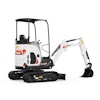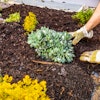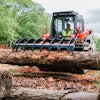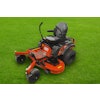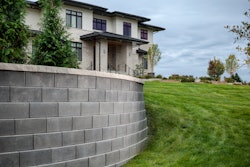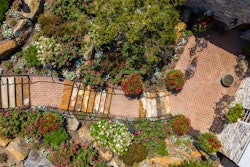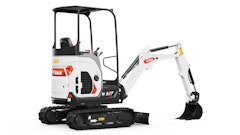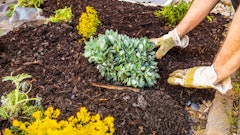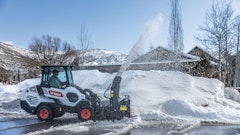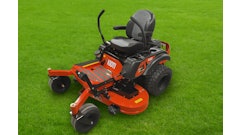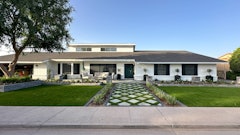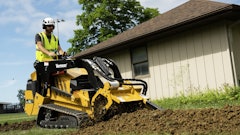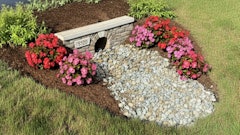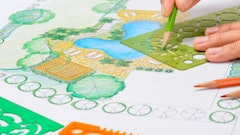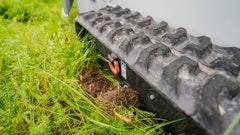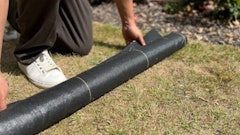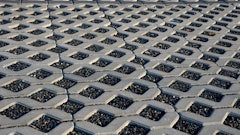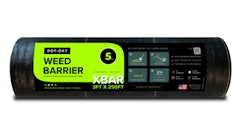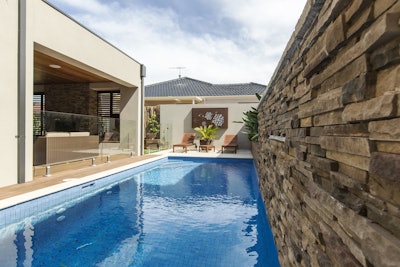
As outdoor living remains center stage in 2025, homeowners are prioritizing their landscapes more than ever before, elevating their outdoor space from a nice-to-have to an essential extension of the home. Ever since outdoor living spaces surged in popularity during the pandemic, the hardscaping industry has continued to evolve.
From seamless indoor-outdoor transitions to low-maintenance, weather-proof materials, today’s hardscaping trends invite industry professionals to reimagine the role of exterior spaces, crafting innovative environments that meet a range of lifestyle needs.
Blending Indoor and Outdoor Design for Multi-Use Living Spaces
Cohesive indoor-outdoor design continues to gain momentum as a top hardscaping trend, with homeowners seeking outdoor areas that mirror the comfort and functionality of their homes. For industry professionals, this shift provides new opportunities to design spaces that feel modern and visually connected, all while providing the versatility that modern homeowners want.
Achieving this cohesion often comes down to using complementary materials, colors and textures to bridge the gap between indoor and outdoor environments. Multi-purpose materials, like manufactured stone veneer, can be used for accent walls and outdoor kitchens, offering an efficient and visually compelling way to unify hardscaping projects with the rest of the home. The wide variety of colors and profiles available makes it easy to match new installations with existing elements. The result is a multi-use landscape that feels purposeful and connected, ideal for clients looking to extend their current lifestyle and aesthetic preferences outdoors.
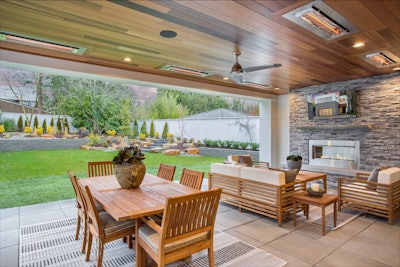 Outdoor amenities—like this open patio featuring Eldorado Stone’s Stacked Stone in Silver Lining—help blur the boundaries between indoors and out, creating seamless, multi-use living spaces.Westlake Royal Building Products
Outdoor amenities—like this open patio featuring Eldorado Stone’s Stacked Stone in Silver Lining—help blur the boundaries between indoors and out, creating seamless, multi-use living spaces.Westlake Royal Building Products
Wellness-Focused Outdoor Living
Another key trend influencing hardscape design is the shift toward wellness-focused living, with homeowners prioritizing feel-good spaces that provide a sense of tranquility, escape and restoration. From serene garden nooks to thoughtfully zoned patios, many of today’s outdoor spaces are being designed to support individual well-being, creating calming, immersive environments that deepen connections with nature.
Infusing spaces with the organic textures and earthy color palettes of manufactured stone veneer, the cozy warmth of fireplaces and fire bowls, and the richness of wood-look trim and accents can be a powerful way to achieve this effect and help foster a stronger link to the natural world. When paired with other elements such as water features or greenery, stone textures contribute to outdoor spaces that feel grounded, calming and restorative.
More on hardscaping at GreenIndustryPros.comWhy Excavators Are Indispensable in Hardscaping - When it comes to digging, reaching, grabbing and placing, a compact excavator remains a hardscape contractor's best friend. What’s So Hard About Hardscaping? - Not much if you’re using a compact track loader, which can be a hardscape contractor’s best friend before, during and after a project. Compaction Tips for Hardscaping Contractors - An expert from Toro has advice to help contractors pick the right equipment in order to set the foundation for breathtaking landscape projects. |
Low-Maintenance Materials and Long Product Life Cycles
The desire for low-maintenance materials has not faded and is shaping the way outdoor spaces are designed, with homeowners seeking products that don’t have to be repainted, restained or otherwise regularly maintained. This preference goes beyond convenience — it also reflects a growing interest in sustainability. Materials that don’t have to be replaced as often or maintained as frequently are a fundamental part of sustainably built homes, not to mention preferable for homeowners who don’t want to invest time and money in repairs or replacements down the line.
Materials that last longer and require less maintenance contribute to more resource-efficient landscapes, aligning with environmentally conscious building practices. For hardscaping professionals, this shift reinforces the value of specifying products that offer competitive durability and consistent performance over time. In projects where longevity and ease of upkeep are priorities, long-lasting, low-maintenance materials help deliver outdoor spaces that remain attractive and functional with minimal upkeep.
Extreme Weather Protection
With extreme weather events becoming more frequent and severe, the demand for high-performance, resilient materials has also increased. Building professionals are faced with complex decisions around product selection, tasked with making informed recommendations that balance regional weatherability, climate considerations, performance and long-term sustainability. This is especially critical in the hardscaping industry, since outdoor areas bear the brunt of extreme weather events. Hardscaping is vulnerable to damage during storms, heat waves or prolonged freeze/thaw cycles, making it crucial to choose resilient materials that can stand up to the challenge.
Exterior walls face the same challenges. Manufactured stone veneer (MSV) offers a high-performance solution, with options rigorously tested for performance in harsh environments. MSV can freeze, thaw, heat up, and cool down without cracking, chipping or fading. By using products with proven weather-resistance, professionals can help reduce the need for costly repairs and replacements, providing peace of mind for clients along with long-term value.
As preferences and expectations continue to evolve, hardscaping professionals are uniquely positioned to pave the way in the world of outdoor living. From low-maintenance materials to the rise of holistic wellness, today’s trends reflect a broader shift towards spaces that are intentional, adaptable and enduring.

